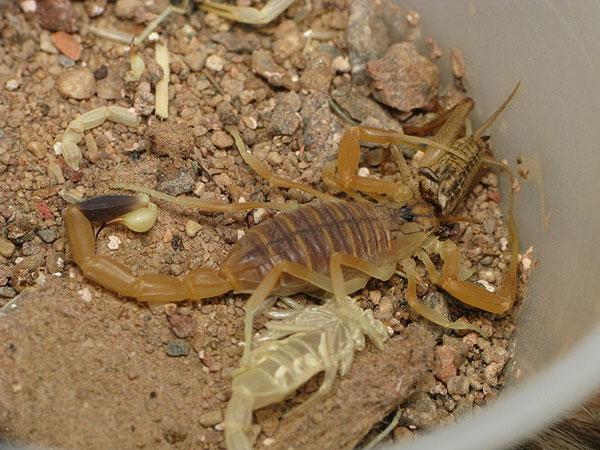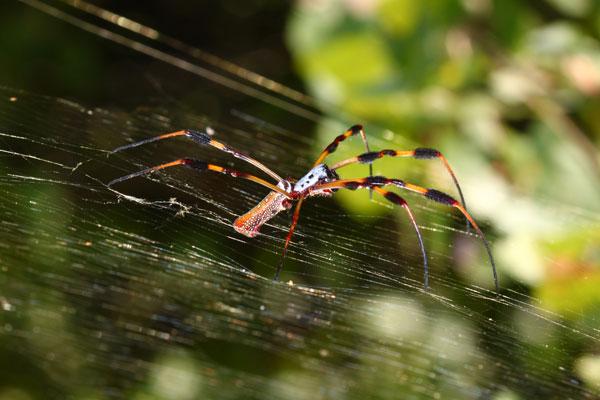9 Creatures That Could Save Your Life
Intro

From preventing brain damage to building skin grafts, recent medical breakthroughs have been accomplished thanks to animals or insects. Whether it's by doctors using their venom or researchers studying their behavior to help humans heal, creatures big and small have greatly contributed to the following medical marvels.
Here's a look at nine of them:
Hobo Spiders

Researchers at the University of Queensland have been studying the feared hobo spider (Tegenaria agrestis), whose painful bite contains venom that can kill human tissue and eat away at human flesh. (In the U.S., the spider is found in the Pacific Northwest.)
The hobo spider's venom contains a potent neurotoxin that can be put to good use, treating nervous system disorders such as chronic pain , according to the scientists. Study researcher Mehdi Mobli presented his findings on Sept. 27 at the annual conference for the Australian Society of Biochemistry and Molecular Biology, held in Cairns, Australia.

Bears
A compound found in bear bile may help people recover after a heart attack, researchers from Imperial College London have found. Previous studies have shown that the synthesized compound, called ursodeoxycholic acid (UDCA), can lower cholesterol and dissolve gallstones.
The new study shows UDCA can also be used to treat abnormal heart rhythms , or arrhythmia, by helping the heart muscle conduct electrical signals more normally, according to the study,.
Get the world’s most fascinating discoveries delivered straight to your inbox.
UDCA does this by changing the electrical properties of myofibroblast cells, which are involved in the development of the heart's scar tissue in heart attack patients, said the study, which was published in the journal Hepatology in August.
Arctic Ground Squirrels

The Arctic ground squirrel (Spermophilus parryii) is helping scientists at the University of Alaska Fairbanks unlock the benefits of hibernation for humans. The researchers found that the "hibernation switch" in the ground squirrels is a receptor on brain cells for the neurotransmitter adenosine, which promotes sleep.
Adenosine is also found in humans, and helps get us ready for bedtime. Researchers took the squirrels out of hibernation by blocking the production of adenosine using a chemical called cyclopentyltheophylline, then put the squirrels back into hibernation by using a chemical called cyclohexyladenosine.
The squirrel research led the scientists to conclude that if they could similarly control adenosine in humans, they could use it to reduce a patient's heart rate and blood flow.
Heart attack and stroke victims can develop brain damage if their brains are starved of oxygen, but by blipping these patients into a hibernation-like state, doctors could buy more time during surgery, saving lives in the process, the researchers said.
Deathstalker Scorpions

The morbidly-named deathstalker scorpion (Leiurus quinquestriatus), also known as the Palestine yellow scorpion, packs a powerful venom that is a cocktail of neurotoxins. Its neon-green color hints at the toxicity of its sting, but researchers at the University of Washington say the scorpion's venom could be used in the battle against cancer.
The scientists have identified a compound in the venom called chlorotoxin, which they say could help deliver anti-cancer genes to glioma, an aggressive brain tumor that is usually fatal. Chlorotoxin allows therapeutic, engineered anti-cancer genes to reach and kill more of the cancer cells than other approaches, according to the researchers.
Dogfish Sharks

Scientists at Georgetown University have discovered that an antibiotic found in the most common shark in the world, the dogfish shark (Squalus acanthias), can be used to protect human cells against a broad spectrum of pathogens.
The compound, called squalamine, is derived from the livers of dogfish sharks, and the new study shows it disrupts the membrane interactions needed for viruses to multiply. Squalamine inhibits infections of various viruses, including hepatitis B, C and D, yellow fever, dengue virus and cytomegalovirus, which is a herpes viruses, the researchers said.
Even more good news: dogfish sharks don't have to give up their lives to save ours. Squalamine has been synthesized the lab since 1995, so the antibiotic compound is no longer directly extracted from shark tissue.

Brazilian Wandering Spiders
Perhaps this venomous spider can't save your life, but it may save your sex life. The Brazilian wandering spider (Phoneutria nigriventer) delivers a painful bite that has an unlikely side effect an erection that may last for hours.
Scientists at the Medical College of Georgia have identified the chemical responsible for the penis boost, and say that it could be used in the development of drugs for the treatment of erectile dysfunction.
Dubbed Tx2-6, the chemical was singled out from the wandering spider's venom as the cause of the post-bite erections following lab tests on rats. Compared with control rats, those injected with the compound showed a significant increase in penis pressure.
The scientists said that, in the future, a combination of a synthetic version of the spider venom and a drug such as Viagra could help patients that don't respond well to Viagra alone.
Golden Silk Orb-Weaver Spiders

A truly life-saving spider, the golden silk orb-weaver (Nephila clavipes) is also known as a banana spider because of its yellow coloring. In a July study published in the journal PLoS ONE, researchers at the Hannover Medical School in Germany reported using the spider's silk to create artificial human skin.
Researchers first "milked" the spiders by stroking their silk glands and spooling the silk fibers that came out. They then wove meshes from the silk onto steel frames, and placed human skin cells onto the meshes.
The experiment showed that the human cells, which were provided with nutrients, warmth and air, flourished within the silk cells. The scientists were able to cultivate the skin cells into tissuelike patterns resembling epidermis, the outermost layer of skin, and dermis, the layer of living tissue below the epidermis.
Unlike silk from silkworms, silk from spiders does not appear to trigger rejection from the immune system, so therefore it could be used to grow artificial skin for patients who require skin grafts, such as burn victims and chronic wounds such as bedsores, the researchers said.
Bottlenose Dolphins

Researcher Michael Zasloff at Georgetown University Medical Center says that dolphins hold the key to helping human injuries heal. His research, published in the July issue of the Journal of Investigative Dermatology, documents several examples of dolphin injuries such as shark bites larger than a basketball that healed in weeks without becoming visibly infected or leaving the dolphins disfigured.
In part, Zasloff credits dolphins' seemingly miraculous healing abilities, such as not bleeding to death despite a large, gaping wound in their side, to their bodies' reactions to diving, which cuts off blood flow to less important body parts. This mechanism could also work to reduce the flow of blood to an injury.
Dolphin skin and blubber have also been found to contain compounds with antibacterial properties, which may help thwart bacteria and explain why dolphins' wounds don't show signs of infection during the healing process.
Further, researchers said that the processes at work when dolphins' bodies rebuild their tissue could involve special types of stem cells or proteins.
These antibacterial compounds and tissue-regenerating abilities could be useful in helping scientists uncover how to help human wounds heal quicker, more evenly and without infection.
Dogs

Dogs can detect bowel cancer even in the early stages just by smelling the breath or stool of a patient, according to a Japanese study published in January in the journal Gut. The findings could help researchers identify the chemical compounds that dogs detect, and use them to make current diagnostic methods more effective.
Dogs are known for their amazing noses, and previous studies have suggested they can sniff out a variety of cancers of the skin, lungs, breasts, ovaries and bladder. Several dog breeds have been taught to identify prostate cancer, usually requiring just a whiff of a person's breath to identify the disease, the researchers said.
The promise of the dog-based cancer detection research is to identify volatile, or easily able to vaporize, compounds given off by cancer. Previous research has indicated a few compounds of interest, and the next step is to test those compounds both with chemical analysis and cancer-sniffing canines.



